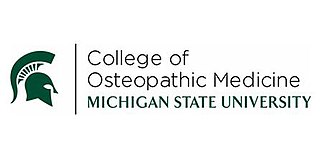
Warren is a city in Macomb County in the U.S. state of Michigan. The 2010 census places the city's population at 134,056, making Warren the largest city in Macomb County, the third largest city in Michigan, and Metro Detroit's largest suburb. The city is home to a wide variety of businesses, including General Motors Technical Center, the United States Army Detroit Arsenal, home of the United States Army TACOM Life Cycle Management Command and the Tank Automotive Research, Development and Engineering Center (TARDEC), the headquarters of Big Boy Restaurants International, and Asset Acceptance. The current mayor is James R. Fouts, who was elected to his first mayoral term in November 2007.

Macomb County is a county located in the eastern portion of the U.S. state of Michigan and is part of Metro Detroit. As of the 2010 census, the population was 840,978, making it the third-most populous county in the state. Of Michigan's five largest counties, Macomb experienced the most population growth (102.5%) between 1950 and 1960. The county seat is Mt. Clemens.

Novi is a city in Oakland County in the U.S. state of Michigan. As of the 2010 census, the population was 55,224, an increase over the 2000 census count of 47,386. The city is located approximately 25 miles (40 km) northwest of the center of Detroit, and about 8 miles (13 km) west of the western border of Detroit. It is about 25 miles (40 km) northeast of the center of Ann Arbor. The city is located within the boundaries of the survey township of Novi Township. The remaining unincorporated township is only a tiny fraction surrounded by the city.

The Detroit metropolitan area, often referred to as Metro Detroit, is a major metropolitan area in the U.S. State of Michigan, consisting of the city of Detroit and its surrounding area. There are varied definitions of the area, including the official statistical areas designated by the Office of Management and Budget, a federal agency of the United States. Metro Detroit is known for its automotive heritage, arts, entertainment, popular music, and sports. The area includes a variety of natural landscapes, parks, and beaches, with a recreational coastline linking the Great Lakes. Metro Detroit also has one of the largest metropolitan economies in the U.S., with seventeen Fortune 500 companies.

Southeast Michigan, also called Southeastern Michigan, is a region in the Lower Peninsula of the U.S. state of Michigan that is home to a majority of the state's businesses and industries as well as slightly over half of the state's population, most of whom are concentrated in Metro Detroit.

The University of Pittsburgh Medical Center (UPMC) is a $19 billion integrated global nonprofit health enterprise that has 85,000 employees, 40 hospitals with more than 8,000 licensed beds, 600 clinical locations including outpatient sites and doctors' offices, a 3.4 million-member health insurance division, as well as commercial and international ventures. It is closely affiliated with its academic partner, the University of Pittsburgh. It is considered a leading American health care provider, as its flagship facilities have ranked in U.S. News & World Report "Honor Roll" of the approximately 15 to 20 best hospitals in America for over 15 years. As of 2016, UPMC is ranked 12th nationally among the best hospitals by U.S. News & World Report and ranked in 15 of 16 specialty areas when including UPMC Magee-Womens Hospital. This does not include UPMC Children's Hospital of Pittsburgh which ranked in the top 10 of pediatric centers in a separate US News ranking.

Henry Ford Hospital (HFH) is an 877-bed tertiary care hospital, education and research complex at the western edge of the New Center area in Detroit, Michigan. The flagship facility for the Henry Ford Health System, it is one of the first hospitals in the United States to use a standard fee schedule and favor private or semi-private rooms over large wards. It also is the first hospital in the country to form a closed, salaried medical staff. As founder Henry Ford viewed tobacco as being unhealthy, the hospital was one of the first hospitals in the United States to institute a total ban on smoking. Henry Ford Hospital is staffed by the Henry Ford Medical Group, one of the nation's largest and oldest group practices with 1,200 physicians in more than 40 specialties.

The Detroit Medical Center (DMC) is a for-profit alliance of hospitals that encompasses over 2,000 licensed beds, 3,000 affiliated physicians and over 12,000 employees. Located in Midtown Detroit, the DMC is affiliated with medical schools from Wayne State University and Michigan State University. Detroit Medical Center hospitals are staffed by physicians from the Michigan State University College of Osteopathic Medicine, which is ranked 17th in the nation in primary care, and the Wayne State University School of Medicine, the largest single-campus medical school in the United States and the nation's fourth largest medical school overall. The Detroit Medical Center is fully accredited by the Joint Commission on Accreditation of Healthcare Organizations.

The Michigan State University College of Human Medicine (MSUCHM) is an academic division of Michigan State University (MSU), and grants the Doctor of Medicine (MD) degree. CHM was founded in 1964 as the first community-integrated medical school, and has a program that emphasizes patient-centered care and a biopsychosocial approach to caring for patients. Required courses at the college reinforce the importance of ethics and professionalism in medicine. In 2013, U.S. News & World Report ranked the college 51st for primary care. The college was also ranked for family medicine and rural medicine. More than 4,000 M.D.s have graduated from the College. Pre-clinical campuses are located on MSU's main campus in East Lansing, Michigan and in downtown Grand Rapids, Michigan, while the clinical rotations are at seven community campuses located throughout Michigan.

Michigan's 14th congressional district is a congressional district that stretches from eastern Detroit westward to Farmington Hills, then north to the suburb of Pontiac.
William G. Anderson D.O. was the first African-American who was a member of the Board of Trustees of the American Osteopathic Association (AOA) for twenty years where he also served as president. He was best known for his role in the Albany Movement, which Anderson led, was formed by local activists in Albany, Georgia in 1961.

Beaumont Health is a not-for-profit health organization in southeast Michigan. The organization has net revenue of $4.4 billion and consists of eight hospitals with 3,429 beds, 187 outpatient sites, nearly 5,000 physicians, more than 38,000 employees and about 3,500 volunteers. In 2017, Beaumont had 175,688 discharges, 17,789 births and 574,591 emergency visits.

The Michigan State University College of Osteopathic Medicine (MSUCOM) is the osteopathic medical school of Michigan State University located in East Lansing, Michigan. The college grants the Doctor of Osteopathic Medicine (D.O.) degree, as well as a DO-PhD combined degree for students interested in training as physician-scientists. MSUCOM operates two satellite campuses in Macomb and Detroit. The college is accredited by the American Osteopathic Association's Commission on Osteopathic College Accreditation (COCA) and by the Higher Learning Commission of the North Central Association of Colleges and Schools.

Saint Joseph Mercy Health System (SJMHS) is one of the largest health care networks based in southeast Michigan, United States. It consist of five prime hospitals, nine Urgent Care Centers, and five Health Centers spread around metro Detroit, providing health care in six counties that include Livingston, Macomb, Oakland, St. Clair, Washtenaw, and Wayne.
St. John Detroit Riverview Hospital was a hospital controlled by the St. John Health System. It was located on Jefferson Avenue on the east side of Detroit, near Belle Isle.
The Ascension Providence Hospital, Novi Campus, formerly St. John Providence Park Hospital, is a hospital in Novi, Michigan in Greater Detroit. It is a part of the Ascension Michigan division of the Ascension Health System.
Oakland University William Beaumont School of Medicine (OUWB) is the medical school for Oakland University (OU). The campus is located north of Detroit in central Oakland County, Michigan and spans the cities of Auburn Hills and Rochester Hills, but has a Rochester mailing address. OUWB is named for OU which was named for Oakland County and William Beaumont Hospital (WBH) which was named for US Army surgeon William Beaumont who became known as the "Father of Gastric Physiology" following his research on human digestion started at Fort Mackinac on Mackinac Island, Michigan. WBH's original name was "Oakland Hospital" named for the county. But to distinguish itself from nearby Oakwood Hospital, Oakland Hospital changed its name just before officially opening for business.

In 2004, Metro Detroit had one of the largest settlements of Middle Eastern people, including Jews, Chaldo-Assyrians, and Arabs, in the United States. As of 2007 about 300,000 people in Southeastern Michigan traced their descent from the Middle East. Dearborn's sizeable Arab community consists largely of Lebanese and many Assyrian/Chaldean/Syriac who immigrated for jobs in the auto industry in the 1920s, and of more recent Yemenis and Iraqis. In 2010 the four Metro Detroit counties had at least 200,000 people of Middle Eastern origin, excluding Jews. Bobby Ghosh of TIME said that some estimates gave much larger numbers. From 1990 to 2000 the percentage of people speaking Arabic in the home increased by 106% in Wayne County, 99.5% in Macomb County, and 41% in Oakland County.




















